Meet Lottie Sweeney, England’s Fake Food Virtuoso
by Julie Goldberg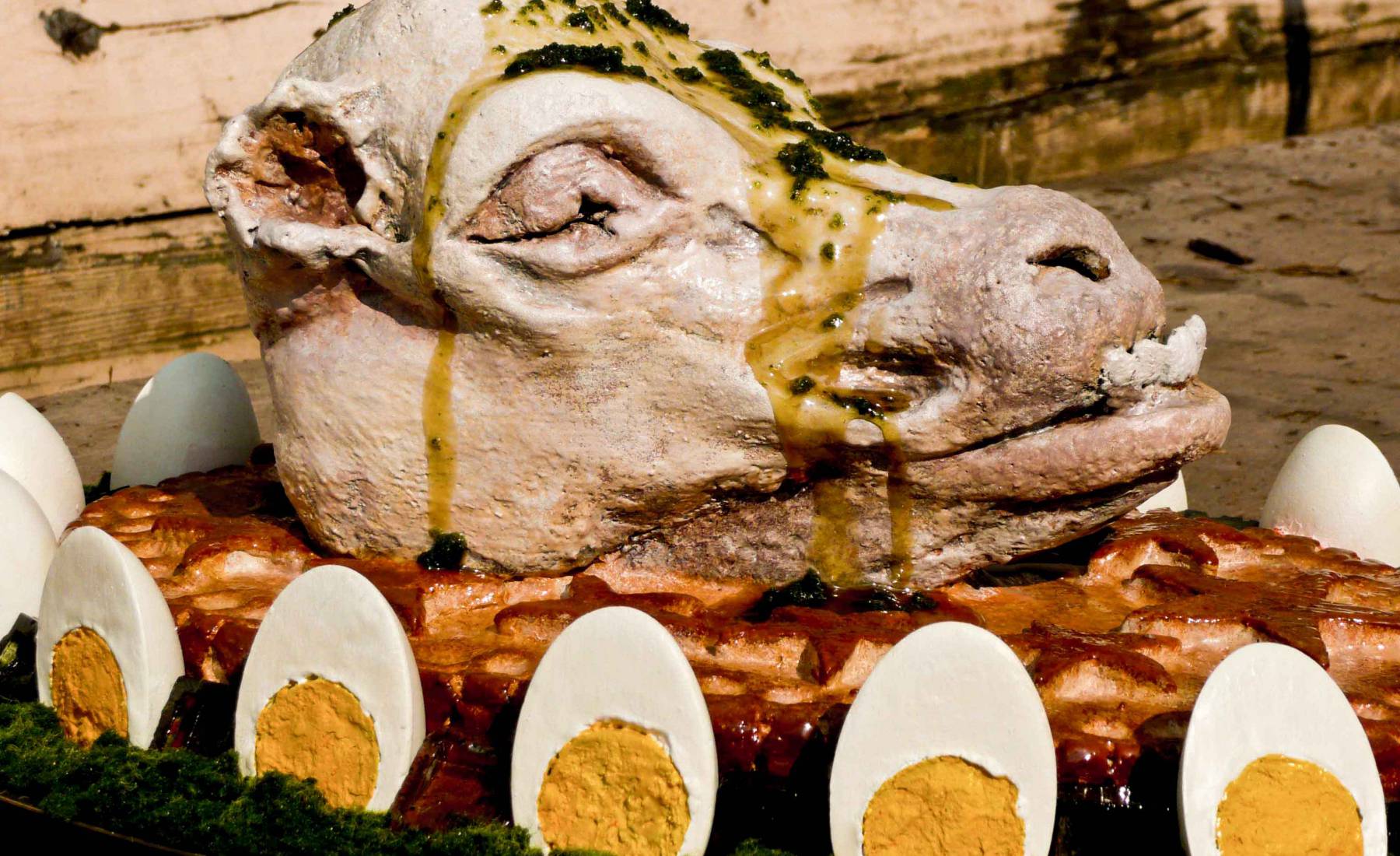

Over email, Lottie lets me know that she has pretty dodgy reception on account of living on a farm in Priddy, but will walk down to the road just before our scheduled phone call. When we finally do get to talk, her voice comes through bright and clear, unmuddied with urban babel and lit with enthusiasm. It’s a busy time for her and her husband, with calving season underway and one quite ill cow taking up a lot of their energy. Exhausting as the farm work can be, she insists she wouldn’t want it any other way. She grew up around animals in a small holding, and later spent a few years working on a friend’s farm through every lambing season. “I loved it,” she says. “Everyone else was just like I don’t understand why you do this.” We get so caught up in the particulars of dealing with sick cows and 5am wake-up calls, I almost forget what I’ve come to ask her about: her prolific career in fake food production.
Ever been to a historical museum and seen a banquet of boar’s heads and potatoes, trifles and jellies? Lottie is the master behind these hyper realistic displays. Over the years, she has done work for the SS Great Britain, Glastonbury Abbey, the HMS Alliance in Portsmouth, and numerous other museums, national trust sites, and more. With the shutdown of museums across the UK, however, she found her entire livelihood rendered suddenly — if temporarily — obsolete. Luckily, she has her own land to live off of, and was blessed with the opportunity to do her first faux-food project for a film set. “That was a life-saver for me,” she says. “Overnight, my busy went from being quite busy to just totally halted, everything just stopped. So this was a real godsend.”
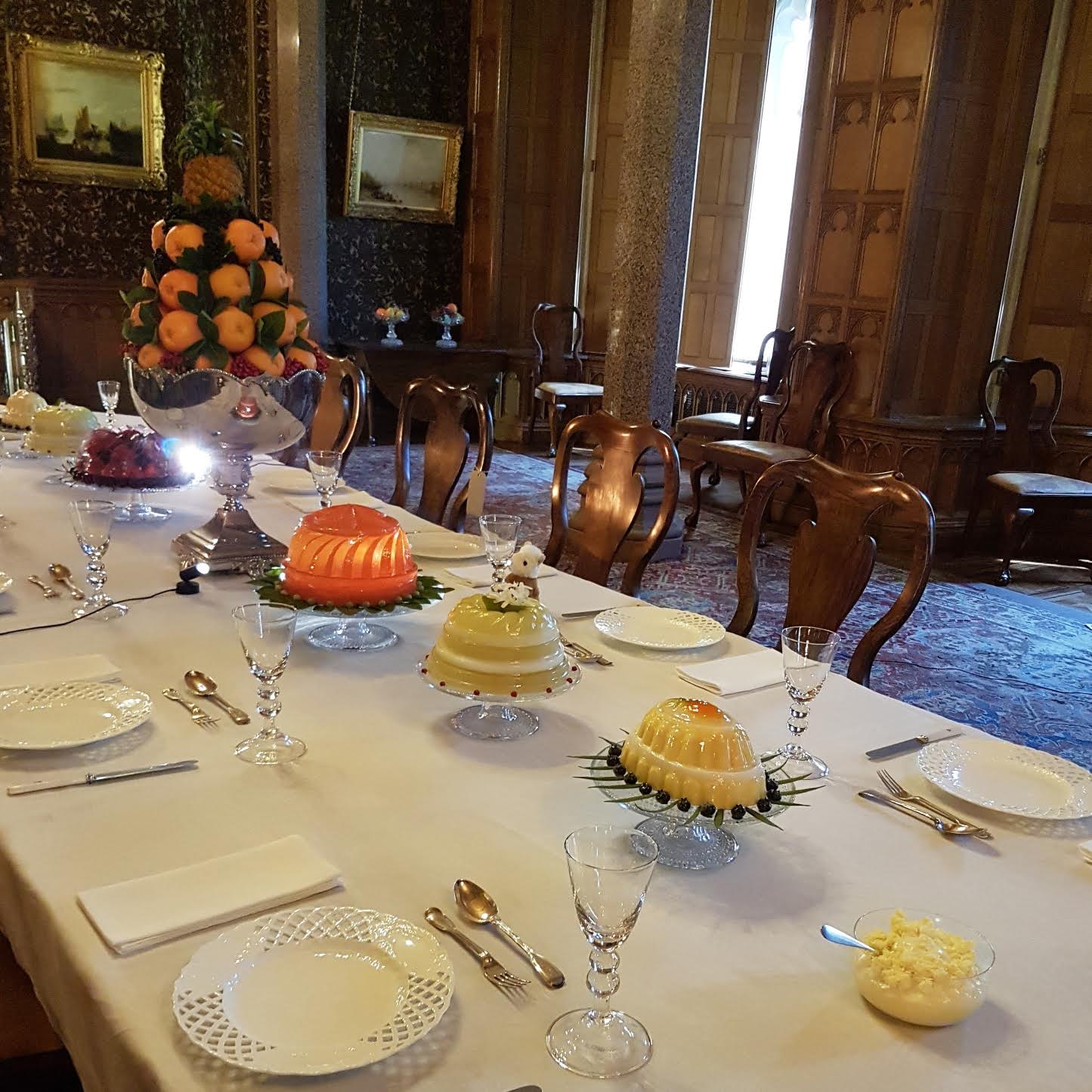 finished table at Tyntesfield National Trust
finished table at Tyntesfield National TrustSuccessful as she has been in this quite niche industry, she worked a whole host of odd jobs before she ever made her first resin jelly. One, for example, was concealing antennae for a mobile phone company. Along with a whole brigade of aspiring artists in construction workers’ trousers, she was tasked not simply with perfecting the color and texture of the antennae to match the surrounding architecture, but with assessing the success of the deception under various lights and from all lengths of distance; a color that seemed perfect up close could look completely off once she climbed down a ladder and walked back a hundred meters. After that job, Lottie reflects, everything else seemed rather easy in comparison. “We used to work fourteen hour days stuck up some skyscraper in Coventry, painting some mobile phone antenna to look like a rusty metal tank or something,” she laughs.
Driving around on cherry pickers and eating her lunch atop scaffolding, she could not yet imagine that the skills she acquired there — the knack for replicating color, for capturing textural details — would be the building blocks of her career. Years later, in 2007, she booked her first gig on the SS Great Britain in Bristol. They needed someone to populate the historical steamship turned museum with small, decorative touches, including the kind of food that would have been eaten aboard the ship in its heyday. It was not real food, however, and hence not a chef, that they were looking for. What they needed was an artist.
“Well, you know, there’s a slight snobbery about calling what I do art,” says Lottie, when asked if she indeed considers herself an artist or if she identifies as something else — a creator, perhaps; a craftsman; a master of illusion. She’s long stopped worrying about such labels, however, and prefers to focus on what truly matters to her: that she loves what she does, that she works incredibly hard, and that her faux-culinary creations do, indeed, have an aesthetic and educational value, no matter what you want to call them. “I guess you could put any of the things I make in an art exhibition and call it art if you wanted to,” she contemplates, “but for me it’s more about the story.” Through the strategic placement of a few items, museum-goers can immediately get a sense of what kind of environment they’re in. It makes sense. When we see food — real or synthetic — in a home, we can immediately imagine ourselves there. And unlike family photographs or other signs of a “home,” which, in their particularity, only ostracize us, food belongs to both no one and everyone. It’s no accident that real estate brokers often encourage their clients to leave bowls of fruit out for display during an open house. “By making some food you can tell the history of a national trust house or the people that lived there, and you can tell it very, very directly without having to write about it particularly, or explain it or have interpretation boards,” Lottie explains. “And people love fake food. So it’s easy. It’s an easy way of telling a story.”
Indeed, when working with a venue — most often, a historical museum — her first task is always to figure out what kind of story her client is trying to tell. Sometimes there is documentation of exactly what was eaten. Other times, it is based on general, historical context. Either way, it is a means of characterizing an era and particularizing a scene. What museum goers want to see is not a table or kitchen curated for public viewing, but rather one frozen in time, seemingly walked in upon in a moment of quotidian imperfection. On the SS GB, for example, one of her most popular creations was a pot of slop, over which visitors would stand in a mix of awe and disgust.
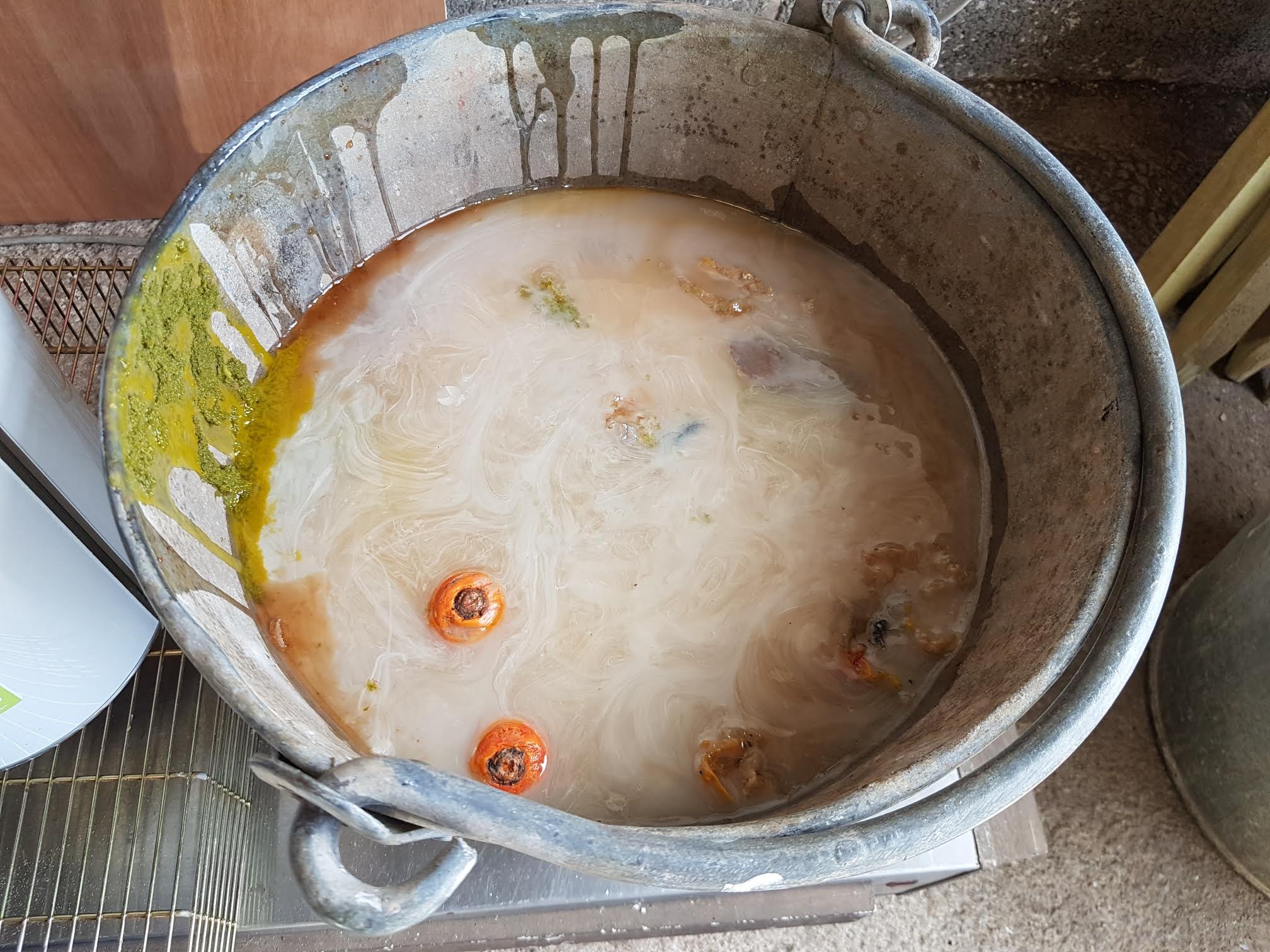
pot of slop on the SS GB
Making an intentioned mess is indeed one of Lottie’s fortes. “Often you’ll go into the place and you’ll say okay, why don’t you put out a cup with a pastry brush, why don’t you have a bit of flour and a flour shaker with fake flour around it,” she says. When working on a display for Sally Lunn’s Eating House and Museum in Bath, home of the famous Sally Lunn’s bun, she suggested that the female mannequin playing the famous Lunn should have two handprints of flour on her bum. “There are very simple things you can do to expand the kind of central story that they’re trying to tell,” Lottie notes. “And plates with bits of pudding on them and things like that, people find that very funny for some reason.”
dirty plates on the SS GB
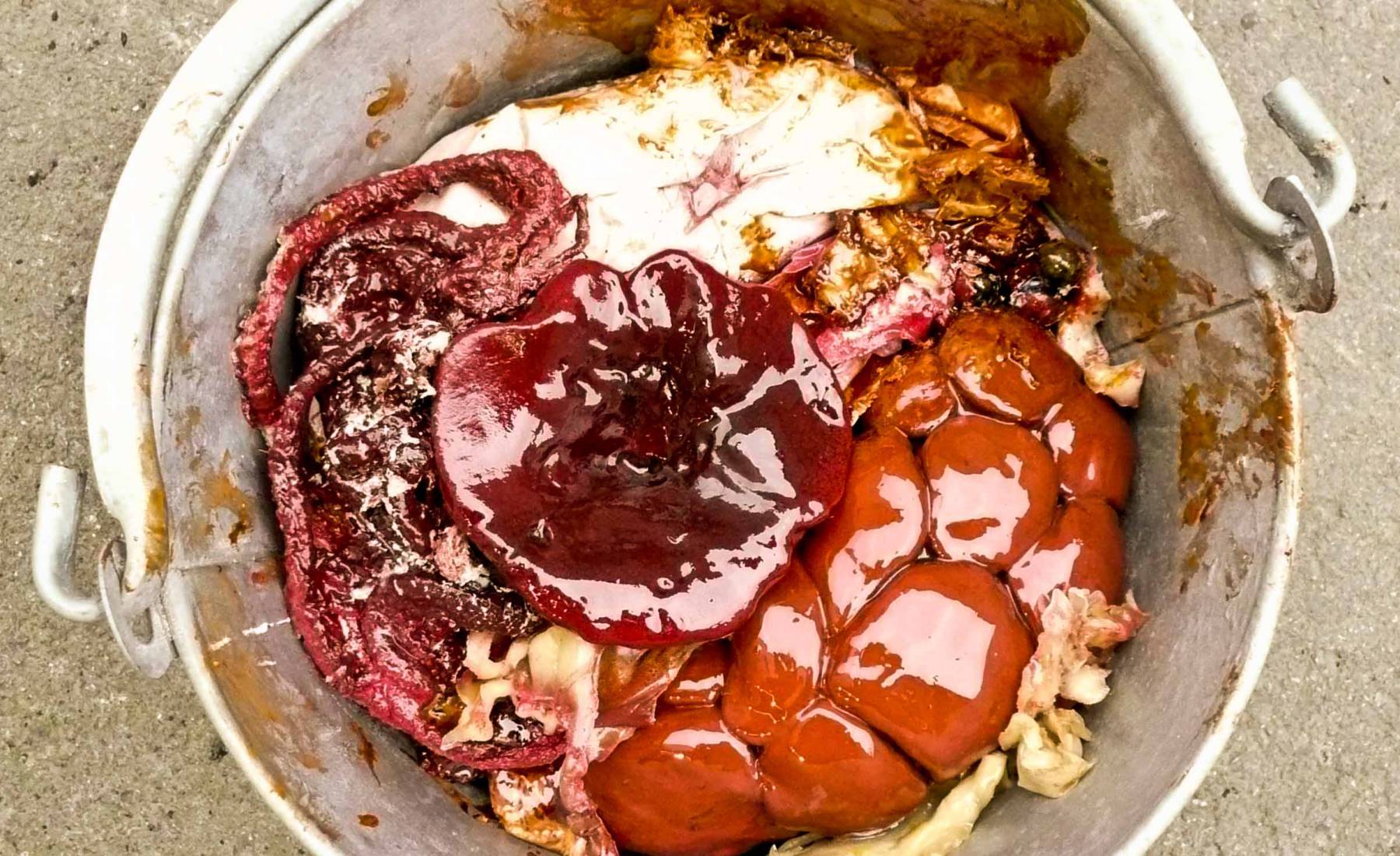
When it comes to storytelling, she always pushes for the most authentic narrative, as she has found that the most moving bits of some of these sites’ histories are, for whatever reason, often excluded. From the landed family of Tyntesfield made their fortune off of guana (AKA bird poop), to a couple of “close female friends” (read: lovers) who lived happily in their village, to a famous composer who, breaking with the custom of the time, kept his pregnant maid and her child on at the house, she has often advocated for the most compelling elements of the estates’ legacies to be brought to life in the exhibition, only to be shot down in one way or another. As Lottie puts it, “the actual story that they don’t tell is fascinating.” The story of the composer’s acceptance of his pregnant maid, for example, was truly exceptional for the time and, Lottie felt, morally instructive. She suggested that they fill one of the rooms of the house with the letters she wrote throughout her pregnancy, but the museum didn’t go for it.
While she’s immune to the snobbishness surrounding museum “prop” production, she is surprised at how often craftsmanship is equated with a kind of anti-intellectualism, as if working with her hands disqualifies her from using her mind. “I chose to do art because that’s what I wanted to do, you know, I’m not doing it because I have no brain,” she laughs. “I tried to join an organization that was for people who work in interpretation in museums. It’s a very small organization that gives people support and I tried to join them and they just said that no, I didn’t have the relevant experience, even though I was making all the stuff on all these different sites.”
Still, there are many who are truly respectful of her craft and eager to voice their praise. As long as she is making an impact in the way that matters to her — that is, through telling stories, through sparking curiosity — she is content. She recalls one man who regularly brought groups of disadvantaged children onto the boat. One day, he approached her to ask her if she had made all the foodstuffs he saw, and to thank her. Her works, he explained, made it so easy to engage the kids, who were usually disinterested in his lessons; for the first time, they were asking him questions. “Occasionally people say stuff like that which makes it kind of worthwhile,” Lottie reflects.
Her uncanny creations don’t just blend into the mise en scène. Instead, they draw attention in their own right, often to the extent of painstaking scrutiny. “I’ve had lots of people just say, well, I’m sorry, I know you’ve been working there for a year or something but I just can’t see what you’ve done,” Lottie says, “but that is a massive compliment, because if they can see what you’ve done, you haven’t done it very well.” She takes the occasional theft of her pieces as a compliment as well — certain groups of schoolchildren are known to play a game with their friends of who-can-nab-the-best-souvenir.
Ultimately, it’s the opportunity to connect with all kinds of people that makes her job truly exciting. Sometimes that connection comes indirectly; she’ll never meet half of the people who have been awestruck — or hunger-struck — by her creations. Other times, it’s more tangible. When she did work for the Fishing and Heritage Centre up in Grimsby, a port town in North East Lincolnshire, she was overwhelmed by the warm response she and her husband got both from the museum workers and the town’s residents in general. The main curator of the museum gave them an after-hours tour, and later they got to see one of the last smokeries in the town. “We joke because we never go anywhere romantic and probably our most romantic weekend away was to Grimsby,” she says.
The ride up there was also its own adventure. She had prepared twenty-eight pieces of Haddock, made with copious amounts of resin to ensure they would hold up when placed in ice, as the museum had specified they would be. On the drive up to Grimsby, she started to find herself feeling a little woozy. “I was just high as a kite because the car had all these resin fumes,” she laughs. They rolled all the windows down, suiting up in their winter jackets to keep warm.


Haddock for the Grimsby Fishing and Heritage Center
Indeed, her work has taken her to strange places, both physically and figuratively. Sometimes she gets funny looks when she has to ask for something like a thigh bone from a deer. For one assignment, she was asked to make not just fake food, but fake fake food. “There was a company that was making vegan mince,” she explains. “It’s mince made out of mushrooms made to look like real mince. They needed to send it to the Arab emirates but they weren’t allowed to send anything that was a food product, so they asked me to make fake fake mince. For the first time, she was tasked with not only replicating a food item, but replicating a replication. This meant that her reproduction had to be faithful to the product, even if the product itself didn’t perfectly resemble the original item it sought to imitate. “It was really odd, it was really odd,” Lottie laughs. “And they color it all so it kind of resembles mince. I mean, when you see proper mince, like when we pick up mince from the butcher from one of our cows they’ve slaughtered, it’s a completely different thing. But it needed to look not like real mince. It needed to look like their fake mince.”
In her own life, Lottie is a professed carnivore. “We’ve got all our own meat and stuff which we know only ever eats grass, it never has antibiotics, it’s all homeopathically treated on organic grass,” she says. “And it’s so tasty that you don’t actually have to do anything very complicated with it. The less complication, the better.” She tried to be vegetarian once and found herself feeling ill, likely as a result of the fact that she was subsisting almost exclusively on cheese. Though she tends to stick to simple meals of natural, high-quality ingredients, she does enjoy cooking for herself. “It’s quite odd to end up making food in a fake realm and a real realm, I guess,” she says.
The process, it turns out, is not all that different in the studio or in the kitchen. With both real and fake food, mastery over a dish comes only through trial, error and an unyielding attention to detail. She emphasizes that she always has to work from a real-life model, whether that means she has to go to the store to buy whipped cream or make a pastry from scratch. Attempts to work purely off of memory, she explains, can easily lead her astray. “When you get lazy, your mind just kind of makes up the colors,” she tells me. “And the trick with fake food is if the color isn’t absolutely spot on, it doesn’t look real [...] I’ve been doing it for years and years and years and you just keep having to go back to the basics.”
Her most recent work, on the movie set, has challenged her in an unexpected way, as she finds herself struggling to sacrifice her ingrained dedication to detail in order to produce the sheer quantity of faux foodstuffs required for the film. Despite her client’s insistence that verisimilitude need only be executed to a reasonable degree, Lottie simply “do[esn’t] understand that level of good or not good because [she’s] never worked in film before.” Her work, she explains, “is made for the person standing next to it who has to think that it’s real. I really don’t know what you can get away with when something is on camera.”
As Lottie and I finish talking, she heads back to her workshop, AKA the barn, a space she cherishes but admits has its drawbacks. Its exposure to the elements, for one, works both for and against her. It’s very airy which is critical for airing out resin fumes ; on the other hand, it can be very cold and damp. She makes do. Sometimes birds swoop in and watch her work, which she doesn’t mind. The scarcity of light, particularly in the wintertime, is her main challenge. “Obviously to get the right color, you need to see it in daylight,” she says. “There are a lot of things I paint in artificial light and then you paint it again in daylight and it’s completely wrong.”
Looking forward, she remains grateful for the opportunity to do what she loves and live as she wishes to — actively, amongst animals, grounded in the outdoors. Another project she has been working on will be up in an exhibition in Herefordshire called “Apples and People.” Shown in a proper gallery setting, the apple imitations will be displayed on plinths and thus presented as art objects in a way her previous creations perhaps have not. Regardless of what labels anyone else wants to give her, and how little she herself is concerned with such labels, it’s clear that there is a profound artistry to what she does.
With the easing of lockdown restrictions, she hopes her work will pick up again soon, and that the kind of museums for which she works haven’t taken too severe of a blow. Meanwhile, her and her husband are planning on starting a beef business and a raw milk dairy — all of it 100% real and resin-free. You can check out more of her work at feastsoffiction.com.
apples-in-progress
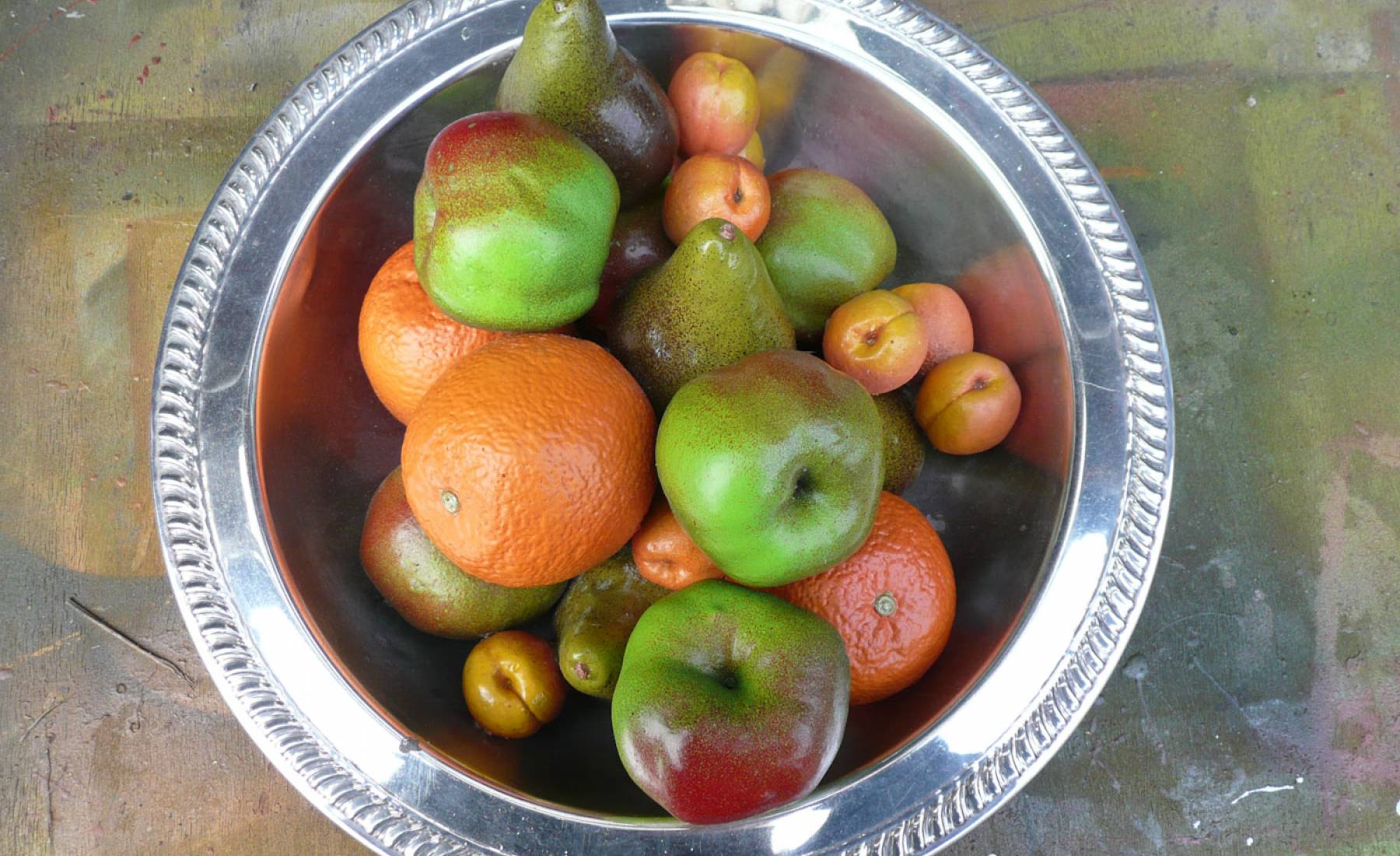
***